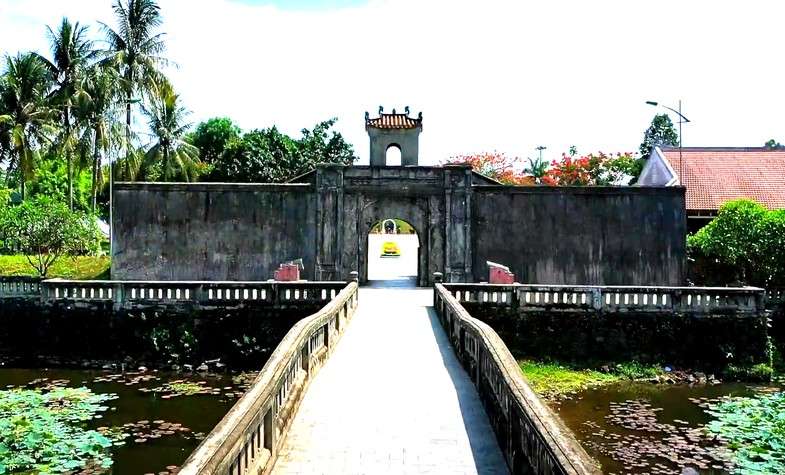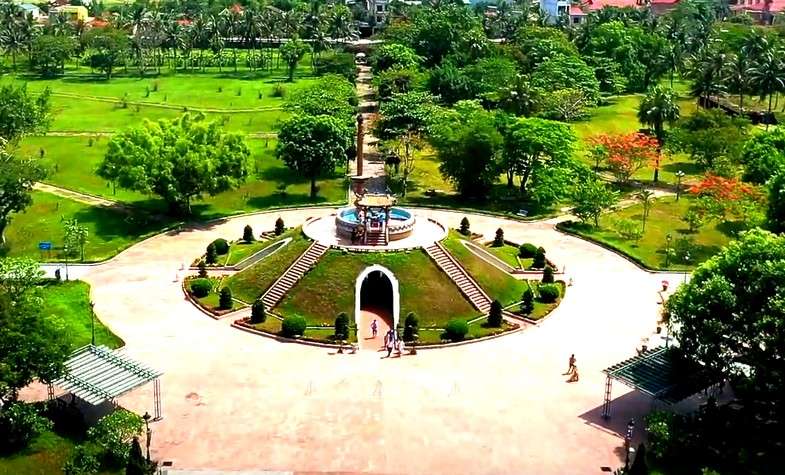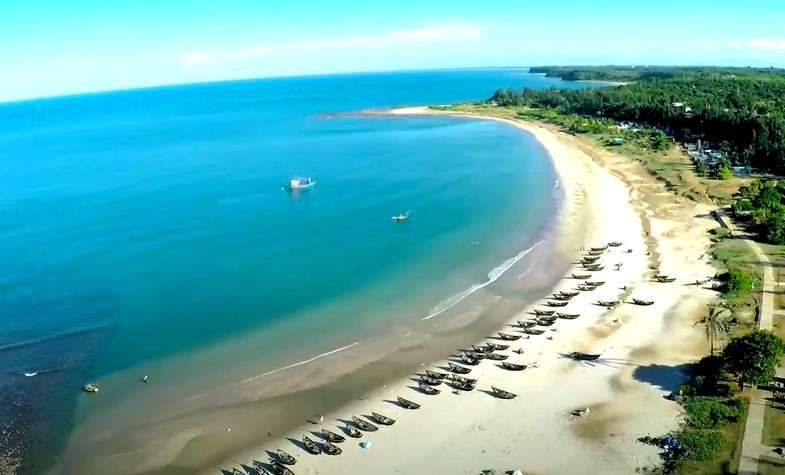

Located in Central Vietnam with a 75km coastal line, Quang Tri province is not only a historical and cultural land but also a nice place to relax and discover the landscape of pristine forests and stunning beaches.
The province is famous for about five hundreds of revolutionary historical monuments such as the Quang Tri Ancient Citadel, Vinh Moc tunnel, Khe Sanh Combat Base, La Vang Marian Sanctuary, Hien Luong bridge, Humbergur hill, the Truong Son Martyr Cemetery...
These relic places attract millions of tourists come to visit the former battlefields and cemeteries to pay tribute to war martyrs; to show respect to the past, trust the present and look forward to the future.
Coming to Quang Tri, visitors will feel the very unique characteristics of the land and the people. With the advantages, Quang Tri became a bridge for famous tours from South to North of Vietnam, the tours for veterans coming back to the friendly country after years such as Central Heritage Trail, Ho Chi Minh Trail - A legendary trail...

Quang Tri Ancient Citadel
The Quang Tri Ancient Citadel is at the East of Quang Tri province. It is famous for the 81-day-night battle between North Vietnam and the alliance of the US Army and South Vietnam in the Vietnam War in summer 1972. The struggle was very fierce with the maximum support of firepower from heavy artillery, gunboats and the B-52 bombing of the US Army.
The fight inflicted heavy damage to both sides and was considered the most violent combat in the war.
In order to defend the citadel, thousands of heroes sacrificed their youth, dreams, and life for the country. The blood and bone were blended into an inch of ground, takes the peaceful sleep in the Quang Tri Motherland.
The Quang Tri Ancient citadel reminiscent of the memory of the war saves the Country against the American in Quang Tri particular and Vietnam in general. It is the most pronounced testimony for the resilient struggle and the glorious history of the Vietnamese people.

Vinh Moc Tunnel
Vinh Moc tunnel complex locates in Vinh Linh District, Quang Tri Province – in the North Central land of Vietnam.
In Vietnam War, this is a military work of the Democratic Republic of Vietnam side against the attacks from the South Vietnamese Republic and the United States. The geological system exists in the Vietnamese Demilitarized Zone - North of the Ben Hai River, Hien Luong Bridge during the years from 1965 to 1972.
The system was dig in the Vinh Moc village - a small peaceful village in the Northern District.
With the important strategic location of the area to the war, the American Army would like to destroy the villages to stop the support from Northern to Southern Vietnam.
With an area of about 820km2 only but the United State Army and the government of Saigon released more than nine millions tons of bombs to the area – with a ratio of 7 tons of bombs on average per villager.
To save the life, the village, and the land, the villagers started to create shelters, the supply stations, continue supporting the Southern battlefields. The locals began to dig the tunnels in 1965 and finished in 1967 with simple tools in more than eighteen thousands labour days, transporting more than 6000m3 of rocks that the American aircraft did not detect. The total length of the tunnels is nearly 2km long with six entrances to the tops of hills and seven entrances to the Vietnamese East Sea.
The villagers lived in the tunnels in six years in 1st and 2nd floor. The 3rd one with too high humidity used for hiding food, weapons and support to Con Co Island – an very important outpost base in the war.
To ensure for more than three hundred people safely live here, they built 94 “room”, each with an area of 2 – 3m2 - enough for two to three people; three water wells, a hall ( 50 people capacity), infirmary, birth house – it has witnessed 17 healthy babies, surgical stations, Hoang Cam kitchen, rice warehouses, telephone stations...
To the past, this legendary tunnel system is a powerful reminder of the horrors of war and an eloquent testament to the Vietnamese fighting spirit and heroism of its people during a difficult period of the nation’s history. Today, it is in the must-visited list of tourists when travel to Vietnam, especially to Vietnamese Heroic Central Land.

Khe Sanh Combat Base
In the tours visit to the Demilitarized Zone (DMZ) in Central of Vietnam, Khe Sanh Combat base is one of the most famous and attractive destinations for tourists all over the world coming to Vietnam to learn more about Vietnam War and the spirit of Vietnamese people at war time.
The Khe Sanh Battle was conducted in the Khe Sanh area of Northwestern of Quang Tri Province during 7 months of 1968.
Khe Sanh is a village inside the valley surrounded by mountains, on a plateau of 60ha wide and 800m high above the sea, at South of DMZ, following the Highway 9 and near the Laos’ border which separates North and South Vietnam in historical years.
The U.S Military Command – South Vietnam established the Army Special Forces camp near Khe Sanh village in early 1962. The American empire wanted a military presence there to prevent support from North Vietnam via Laos’s gates. They both wanted a base for launching patrols into Laos to monitor the Ho Chi Minh trail and serving as a Western anchor of defending along the DMZ area. The 1968 Khe Sanh battle was the longest, heaviest loss, and the most controversial of the Vietnam War.
Beside La Vang holy, Hien Luong Bridge, Ben Hai river, Rock Pile Hill… many tourists see Khe Sanh as the most impressive visited site.
***
Travel Authentic Asia Company is your best choice for discovering the beauty of Southeast Asia. Our experienced and knowledgeable travel advisors are committed to helping you create a tailor-made tour and extraordinary experiences in this majestic region.
If you're looking for an authentic cultural experience, do not hesitate to contact Travel Authentic Asia to choose a Vietnam tour, Southeast Asia tour package or to customize your own style tour to South East Asia.